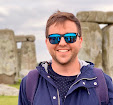Countless cold cases remain consigned to an eternal lack of resolution, their evidence fading into the mists of time due to insufficient resources. For every high-profile instance of a perpetrator being held accountable, numerous other mysteries remain in perpetual limbo. Laurah Norton has long harbored a deep fascination with these unsolved cases, haunted by the lingering "what ifs" and unanswered questions. Yet, as a writing professor, her interest remained merely a personal preoccupation. This changed dramatically when the case of two twins was cracked open by the groundbreaking methods of forensic genealogy. Similar technology had been pivotal in unveiling the identity of the notorious Golden State Killer, prompting Norton to launch a podcast specifically dedicated to unresolved cases. The success of this podcast not only validated Norton's enduring passion but also directed much-needed attention and resources toward forgotten and neglected cold cases.
Lay Them to Rest features Norton's comprehensive exploration of the forensic methodologies in solving murder cases. The book takes readers on a historical journey through the profession's evolution, all while shedding light on modern-day technologies. Concurrently, it follows the efforts to unravel the identity of "Ina" Jane Doe, a case dating back to the early 1990s. The discovery of a dismembered, unidentified female head in an Illinois state park presented an enduring mystery, leaving investigators stumped due to the scarcity of evidence for identification. Norton collaborates with seasoned forensic anthropologist Dr. Amy Michael, leveraging Michael's extensive experience and network of committed forensic scientists to focus on cracking this long-standing case. This gripping narrative gives readers an inside view of the scientific processes, speculations, and serendipitous moments that form the foundation for identifying the nameless victim in this compelling cold case.
The determination behind solving the "Ina" Jane Doe case fascinated me. Norton’s detailed narrative unveils the intricate steps essential to cracking this mystery, emphasizing the evolving technology and relentless pursuit of answers. However, the scarcity of resources poses a significant barrier in examining every case, leaving many forgotten by time. This stark reality resonated deeply while reading. The absence of a unified system to consolidate critical data like dental records and DNA adds to the challenge, forcing investigators to rely heavily on luck and tireless dedication to unravel such cases.
Though Lay Them to Rest admirably debunks the myths surrounding forensic investigations perpetuated by media, the book sometimes delves excessively into technical minutiae. While the meticulous examination of "Ina" Jane Doe's teeth, for example, yielded critical breakthroughs, the exhaustive detail occasionally disrupted the book’s pacing, causing a sporadic imbalance between the urgency of the mystery and the in-depth forensic descriptions. Despite this, Norton's insightful writing sheds light on a widely misunderstood field, providing a valuable understanding of the realities of forensic work and ultimately aiding in solving a decade-old cold case. The book remains an engrossing and enlightening read.
For more information, visit the author's website, Amazon, and Goodreads.
(2023, 86)



Nice review. Not my cup of tea, but glad you enjoyed it.
ReplyDeleteIt's fascinating what forensic experts are able to figure out these days, especially in regards to some of these cold cases. And I don't really understand a lot about forensic geneaology, but I'm intrigued by it. This book does sound very engrossing and itneresting. :D
ReplyDeleteIt really is remarkable!
DeleteI feel the profession can be a bit grim, dealing with death all the time, but the science geek in me really appreciates all the methods and problem solving involved in forensics. Sounds interesting.
ReplyDeleteI could never actually do this for a living, but it is fascinating to read about!
DeleteAs a kid I wanted to be a criminologist and work in forensics for the FBI. But then my entire class trip group in 8th grade was kicked out of the FBI building because one idiot took a picture in the lobby, so I figured it wasn't going to happen...and the next year I was on to journalism anyway so it worked out for the best. And now I'm a teacher, so clearly my interests kept changing. I definitely could not do this job today, especially as a mom.
ReplyDeleteYeah I would have a hard time separating the human element from the science
DeleteThe genealogy DNA sites are such a great tool to catch criminals now. I find it fascinating. I wonder if they solved the mystery of "Ina", her identity and her death in this book. Sounds like a great read despite some pacing issues.
ReplyDeleteIt made for a gripping case!
Delete